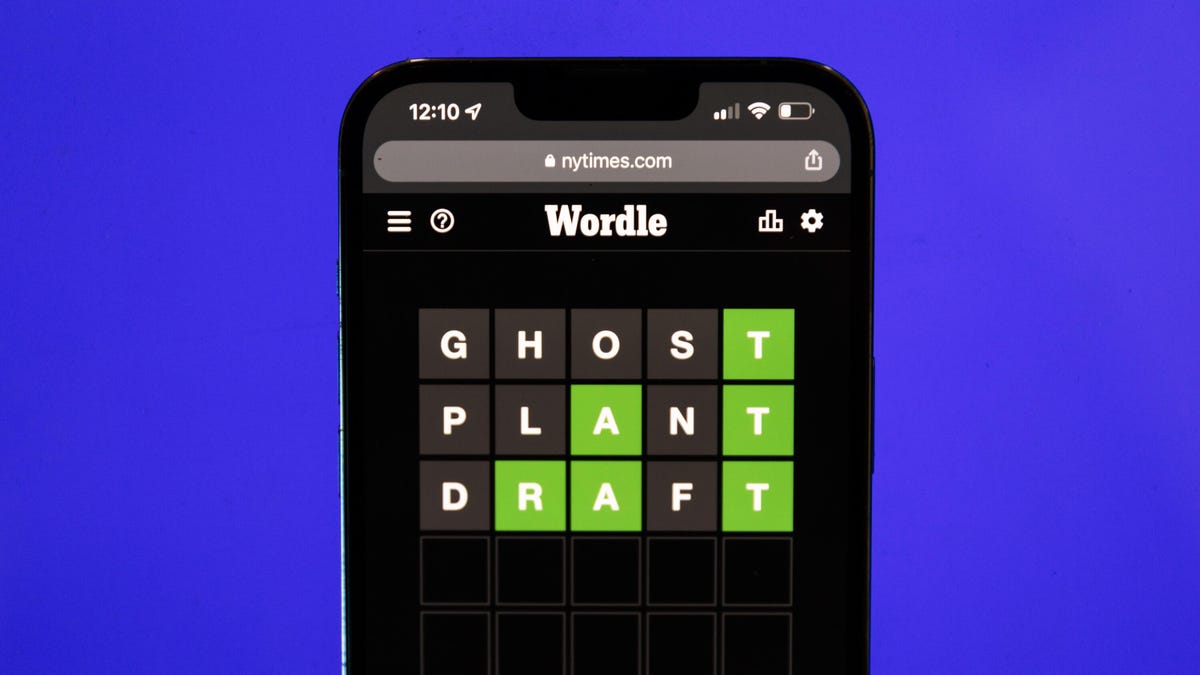This Two-Step Worldle Strategy Will Help You Win Every Game
Follow this simple strategy and build up your win streak.

How's your Wordle streak going?
Wordle has become increasingly more satisfying for me since I developed a two-step strategy that seemingly works every time. My win streak is at 32 now -- a personal best for me.
If you're reading this, Wordle needs no explanation. The puzzle was invented by Josh Wardle (Wardle -- Wordle, get it?) and bought for big bucks by The New York Times back in January. The online game gives you six chances to guess a randomly selected five-letter word, and if you get correct letters, they show up in different colors, depending on if they're in the right spot in the word or not. It's addictive and fun.
I stuck to the same starter words for a long time, and they'd usually work for me. I was a longtime user of "ADIEU" to get in a ton of vowels, and I would often move on to "STORY," to get the two other vowels (sometimes Y!) and some other major consonants going. And that strategy is still a solid one. I may go back to it if I feel I'm in a rut.
Hop on the 'TRAIN'
But these days, I'm starting every Wordle round with "TRAIN," and then moving on to "CLOSE."
TRAIN is pretty self-explanatory if you've studied which letters are most commonly used in English words. All five of the letters in TRAIN are among the top seven letters used.
All I know is that nearly every time I use TRAIN as a starter word, I get a couple correct letters, often in the right spot. And it's an easy to remember starter word for sure.
CLOSE as a second choice is interesting. It gets two more vowels out of the way, and C, L and S also turn up in the top 10 most-used letter list. Sometimes, though, I get zero correct letters out of CLOSE. But believe it or not, that helps me, too. Then I'm able to look at the keyboard showing me which letters I haven't yet guessed, and choose a word that uses any correct letters plus any major consonants I haven't yet guessed.
Correct letter, wrong spot
If you've got a correct letter, but don't know which spot it should go in, you can have some fun with your third guess. If you know that you have an F but not where it goes, guess a word with a lot of Fs, like "FLUFF." That way, you can at least determine if there's an F in three of the five spots. Remember, too, that there may be more than one of the same letter used.
X marks the spot
Here's one more oddball tip. If I have just a couple of letters in the right spot, I personally need to see how the word looks. So I type in the correct letters I have, plus Xs for each letter I have no clue about. If I know the word ends in "ON" from my guesses, I type in XXXON. Then I study the unguessed letters in the keyboard and mentally picture them where the Xs are. (I don't enter these words as guesses, I just look at them for ideas, then backspace over them and delete.)
If I know there's another letter, say an B, somewhere in the mix, I might try typing it in all the empty spots -- BXXON, XBXON, XXBON -- and see if I can picture what words work. Remember, the Xs don't stand for X, they stand for "I don't know this letter."
If the Xs make it too confusing, you can also just write down the options using blanks. That might give you a better view of possibilities. I choose an X because I like to type it right into the Wordle grid, and X seems the most like a blank to me. Since these attempts aren't really words, there's no danger of me accidentally hitting enter and wasting a guess by mistake.
There you go. That's my new Wordle process. It may not be the perfect strategy. But I almost always find myself in a good place after two rounds of guessing.
For more Wordle tips and tricks, here's a roundup of excellent strategies. Plus, New York Times Games has released a new way to play Wordle. If you're done with Wordle for the day, try these other addicting puzzle games.

